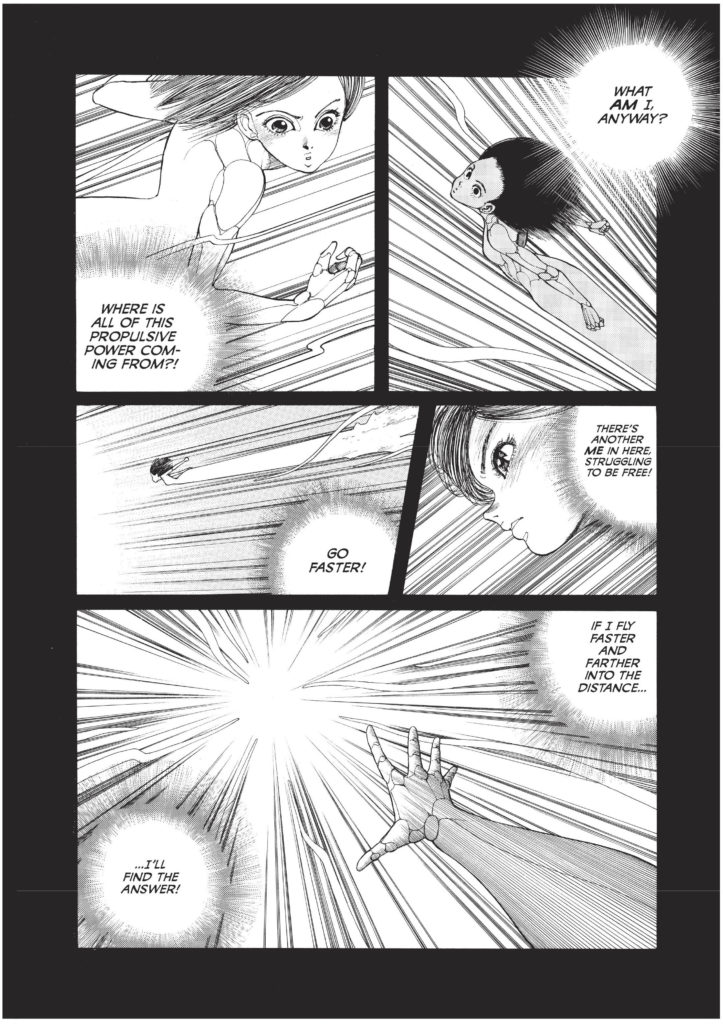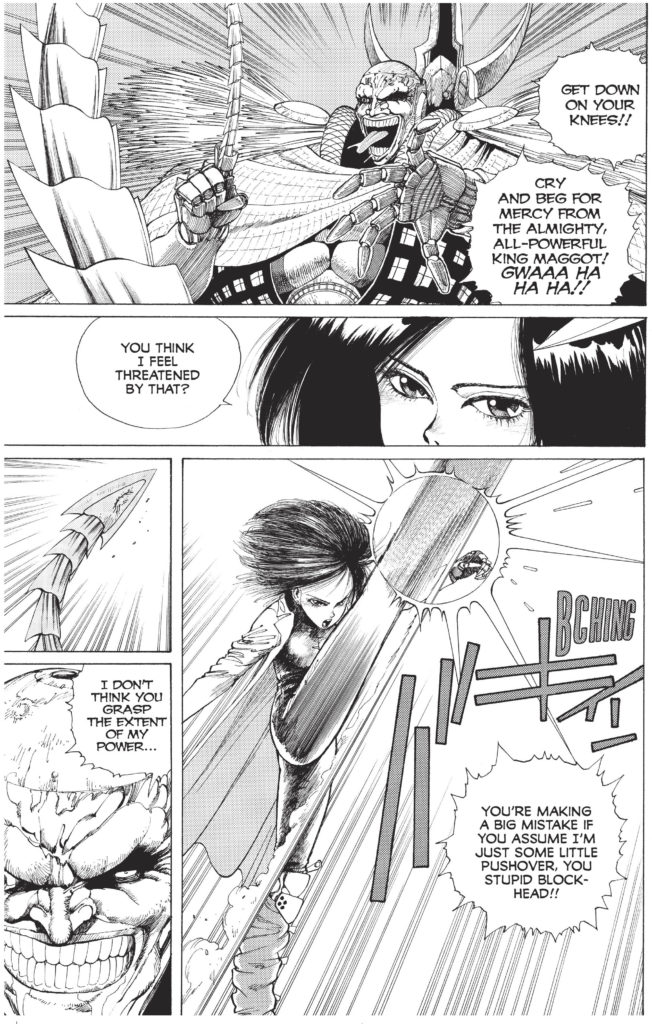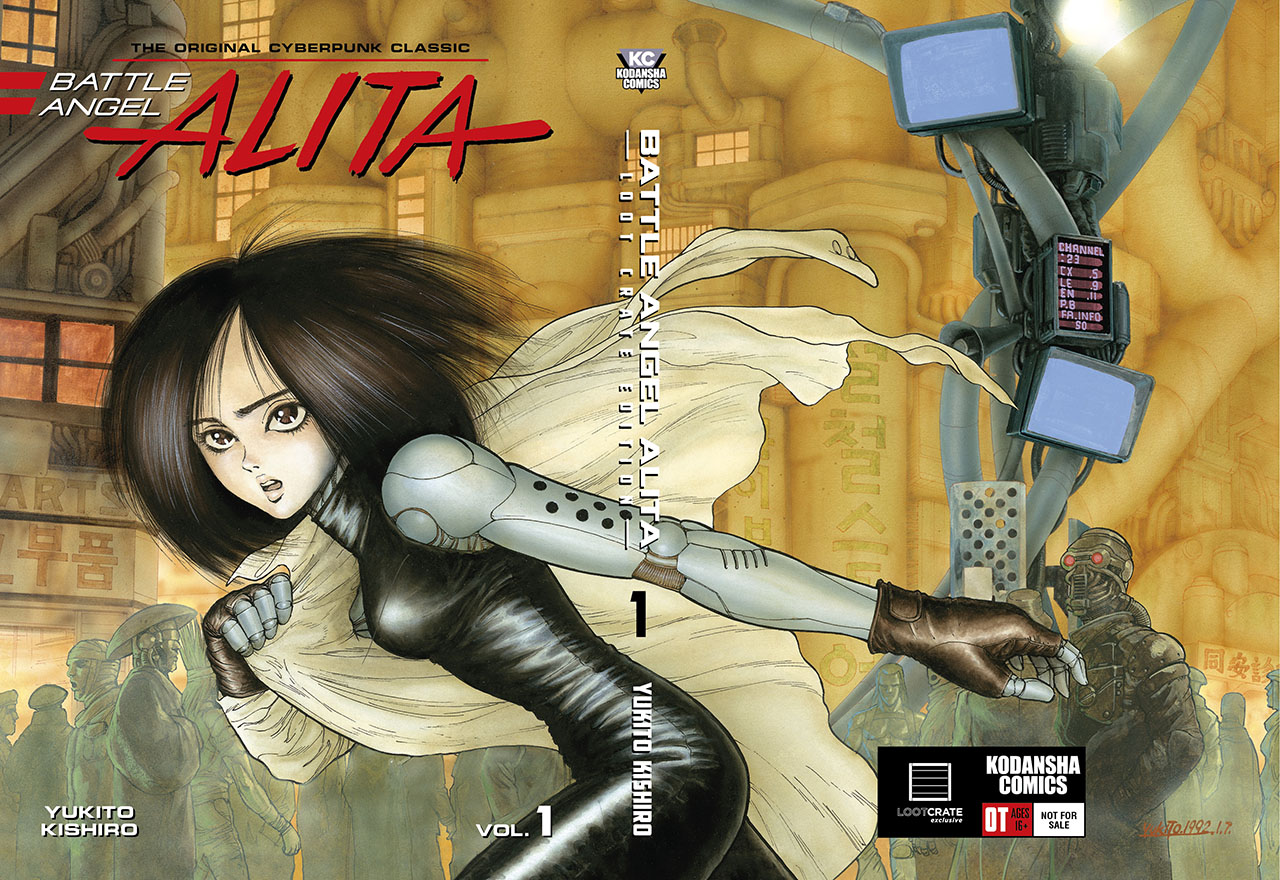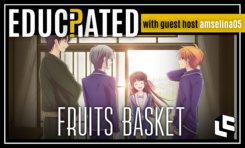The following interview with Battle Angel Alita creator Yukito Kishiro was originally run by Kodansha in Japan. Since then it has been translated for the French audience but this is the first time it has ever been officially translated into English.

(Battle Angel Alita ©Yukito Kishiro/Kodansha, Ltd.)
More than most manga, the original Alita series told short, self-contained stories in each volume, but they all led to a larger story about Alita and who she would become over the course of the manga. What made you decide to go with this approach on the first series, and why did you move away from it when Alita returned in Last Order?
K: There are two reasons. The first is a reflection of the magazine in which it was published. Battle Angel Alita was published in Shueisha’s Business Jump, which is targeted at 30-something, office-working men. It was necessary to make sure that even readers without an interest in science fiction could enjoy it. My idea was to modularize the story, constructing it in roughly volume-sized chunks to keep the length down. That way, it was easy to follow even if you only picked it up partway through.
My second reason was in case the series got canceled. Nowadays, it’s fairly common to see SF/fantasy stories set in another world in Japanese comics, but at the time (late 1980s to early 1990s) there were many obstacles preventing a new artist with no track record from drawing pure sci-fi in a major manga magazine. There was another publisher that was so adamantly against the idea of a science fiction series that they refused me out of hand. Given this sort of headwind, I wanted to be ready to adapt in the case of getting canceled prematurely.
My storytelling approach changed in Last Order because switching to a different magazine reduced the risk of cancellation, plus the target audience was in the range of high school to college age men, which I took to mean that it would be easier to tell a much longer-term story.
The characters appear to be a wide variety of nationalities. What made you decide to take that approach instead of making them clearly Japanese?
K: If the story was set in future Japan, I would introduce plenty of Japanese people, but that’s not the world of Alita. Putting aside the fact that the setting makes it impossible otherwise, I intentionally chose to depict a diverse, universal, foreign vibe for the story. I wanted to draw something that was clearly “not here.”
I’ve heard that James Cameron and Robert Rodriguez have worked closely with you to create the new movie. what has that process been like? How closely does the movie follow the books?
K: I wouldn’t say I’m “working closely” with them. In August 2016, [producer] Jon Landau visited Japan, and I was given a Japanese translation of the movie script. If you can trust the word of the guy who created the story in the first place, it’s really good! But I haven’t requested any changes or corrections of any kind to the script I saw. In January 2017, I visited the set in Austin and got to meet Robert Rodriguez and members of the movie crew. I really felt a strong enthusiasm and respect for the source material from them. So I put my full trust in them to make the movie as they see fit, and I’m looking forward to the film as any other viewer would.
There are parts of the movie that deviate from the details of the original work, but the core of the story – its “soul,” if you will – is quite intact. Please don’t worry about it.

(Battle Angel Alita ©Yukito Kishiro/Kodansha, Ltd.)
If fans could only take away one thing from the experience of watching Rodriguez’s Alita: Battle Angel, what do you hope it will be?
K: I can only say so much, as I haven’t seen the finished film yet… but as the creator of the original story, I think I would be most satisfied if fans of the series forget all they know, dive into the world that the movie depicts, go on Alita’s adventure with her, and when the credits roll, think, “Ahh, that was great!”
Looking back on the original Battle Angel Alita series, what are you most proud of? And as an artist, what personal victories have you accomplished since you began Battle Angel Alita?
K: The proudest I’ve ever been of the Alita series is when I hear fans tell me, “Reading this manga changed my life.” When I started Battle Angel Alita in Shueisha’s Business Jump in 1990, I was 23 years old, just some ignorant kid with hardly any life experience, only a foolhardy determination to draw something great. I had no idea if I was going to succeed or fail.
I’m remembering singing Gamma Ray’s Heading for Tomorrow album while my brother and I spent an all-nighter finishing up the complete draft of the very first chapter before its deadline. While it was running in Business Jump, I didn’t know if Alita meant anything to the people who read it or not. When the series ended in 1995, all of a sudden I got a huge bag full of fanmail, and I’d barely received any until that point. I was stunned that there were this many fans of the series.
After I got onto the Internet in 1997, I got fan e-mail from overseas readers, which helped me realize that Alita had transcended language and cultural barriers to be read and beloved by people all over the world. It was a phenomenal joy to find out that great Hollywood directors like James Cameron and Robert Rodriguez were fans of the series, too. I can’t even put into words what it means to me that the dream cooked up by a 23-year-old kid from Japan 28 years ago is now going down in Hollywood history as Alita: Battle Angel.



